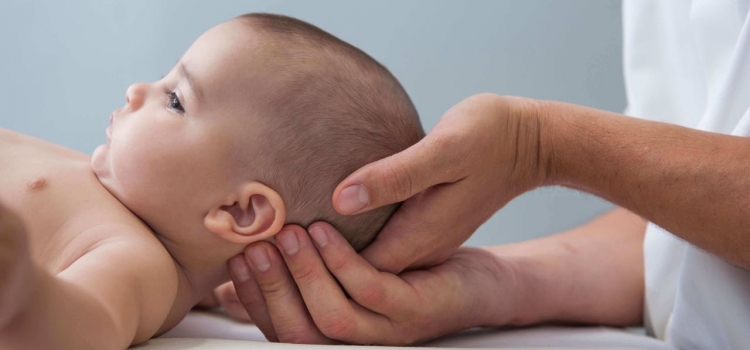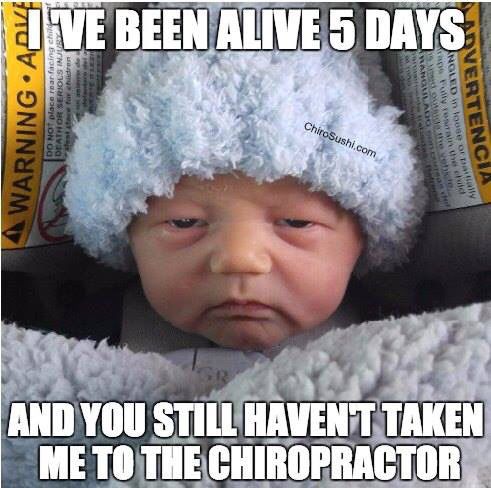
Why does a newborn need an osteopath?
During childbirth, even completely normal, the baby experiences tremendous pressure from the uterus and pelvic bones. Most of all, this pressure falls on the bones of the skull and the cervical and lumbar spine. If the birth was difficult, then cranial deformities and other birth injuries are possible. They may not be noticeable initially and may not be recognized during a routine physical examination.
A visit to an osteopath will help to detect and eliminate the negative consequences of the birth process on the body of a newborn.
Let’s talk about the most common consequences of birth injuries.
1)Minor brain dysfunctions (MBD)

MBD – mild changes in the central nervous system. MBDs are developed on the background of impaired cerebral circulation. Disorder may be caused by birth trauma of the cervical spine or displacement of individual vertebrae.
Later (school and preschool age), MBDs provoke behavioral disorders, learning difficulties, speech disorders.
Osteopathic treatment in this case is aimed at eliminating the clamps in the baby’s body and normalizing cerebral circulation.
2) Torticollis
Special state when the head is constantly tilted to one side and turned in the opposite one. Attempt to turn head causes pain and discomfort.
Gluteal previa or transverse position of the fetus before birth is recorded approximately for 80% of newborns with torticollis. In case of crank neck, blood flow to the brain is decreased which leads to a number of cerebral dysfunctions. Incorrect position of the spine with a crankcase leads to its progressive curvature.
The osteopathic effect in torticollis is in that the specialist relaxes the spasmodic zones of the muscles of the neck and shoulder girdle and restores the correct position of the vertebrae of the cervical spine.
3) Hypertonia
Hypertonia occurs during hypoxia while pregnancy or childbirth. This leads to insufficient blood supply and nutrition of the brain, increased intracranial pressure.
Children with increased tone are restless, often cry without reason, sleep poorly and react sharply to bright light and any sounds. Cramps are possible. In the presence of pathological tone, the child holds his head from birth. If the required treatment is not carried out in time, hypertonia leads to impaired coordination and speech.
In case of hypertonia, an osteopath eliminates dysfunction in the joints between the bones of the skull and includes a mechanism of self-regulation of the body. After the first session, an improvement in muscle tone occurs, appetite, sleep and digestive processes of the newborn normalize.
4) Perinatal encephalopathy (PEP)
PEP – dysfunctions of the central nervous system of newborns. Often occurs in children after hypoxia (lack of oxygen) in utero and during childbirth.
Children with PEP are restless, irritable, scream loudly and for a long time, often wake up. Another extreme is also possible: decreased activity, lethargy and drowsiness, up to a coma.
At a later age, PEP leads to developmental delays (problems with speech, impaired memory, problems with attention), motor disorders, problems with the respiratory system and frequent illnesses of the child.
In case of PEP, an osteopath pays great attention to working with the sutures of the skull to normalize the brain, works with the spine to remove pain and cramps in the baby’s body.
It is important that possible newborn encephalopathy is diagnosed as early as possible: in the first three months of the baby’s life. Early diagnosis and correction of PED give good results in practice.
5) Infantile cerebral paralysis (ICP)

The disease is associated with damage to the brain, motor and muscle systems as well as the central nervous system. The cause of ICP is most often prolonged or complicated childbirth using instrumental methods, infectious diseases of the mother during pregnancy.
At an early age it is difficult to diagnose ICP but it is possible to identify some signs of the disease: 1) violations and complexity of the sucking, swallowing reflex; 2) lack of response to sound, starting from 1 month; 3) lack of a focused look after 2-3 months; 4) child takes postures unnatural and uncomfortable from the point of view of the normal development (since pathological changes in the skeleton and contracture of the joints lead precisely to the adoption of strange body positions).
Unfortunately, ICP cannot be cured completely, but with the help of osteopathy, acute manifestations of ICP can be significantly improved: it is possible to improve condition of brain membranes, relieve muscle tension in the body and normalize motor activity.
In a situation where one of these diagnoses is given to your baby, living is difficult and scary. Nevertheless, we recommend that parents do not despair and do not panic. There is an opportunity to correct and even completely eliminate the diseases that arose in connection with birth injuries. Plastic children’s body responds to procedures and quickly recovers.
Osteopathic treatment is painless. The specialist easily and gently touches the baby. The procedure lasts 20-25 minutes and is recommended once a week.
Each of the Center’s specialists accepts children and osteopath, Olga Tyunyaeva, neonatologist, will work in our team from October.